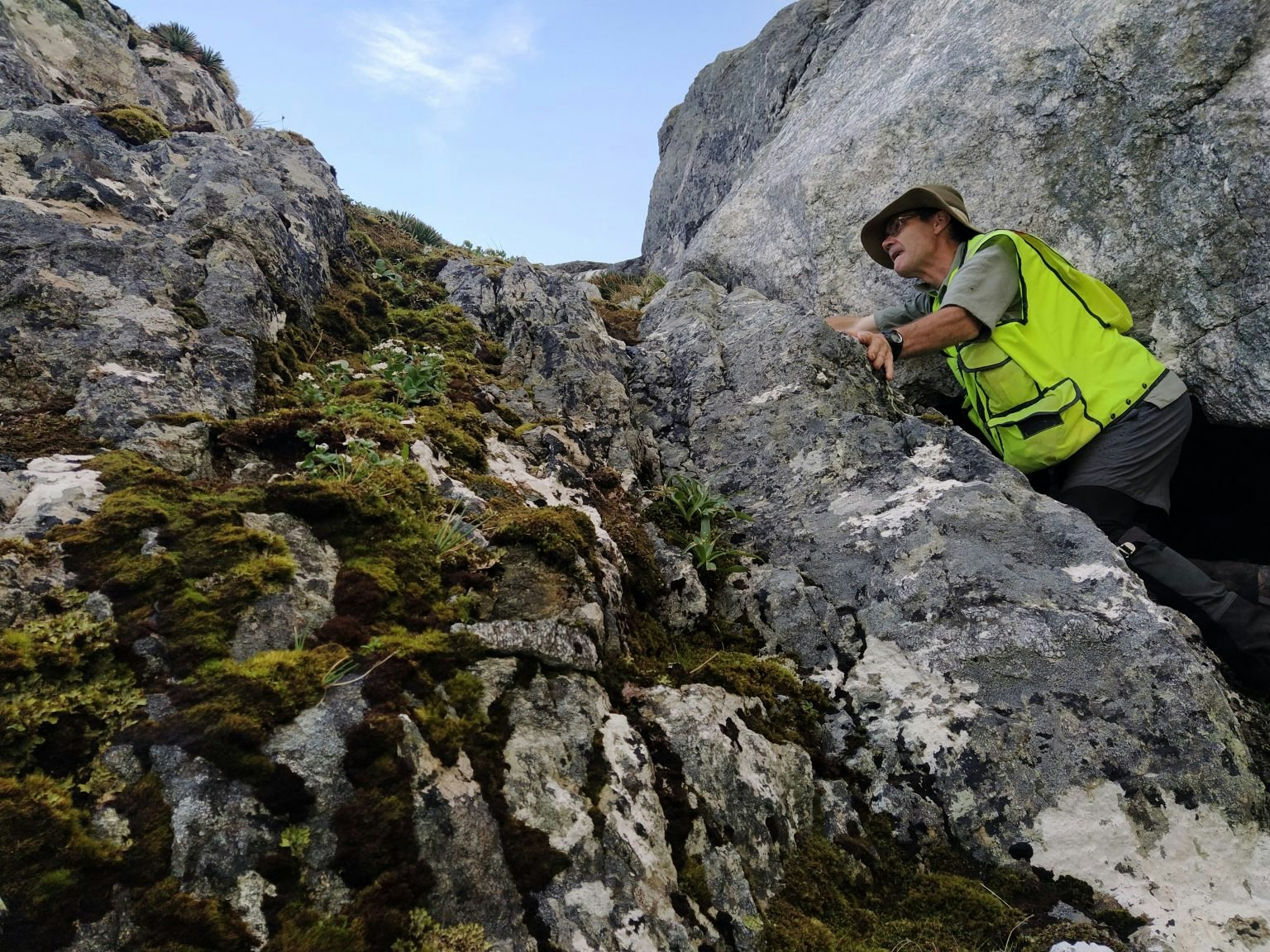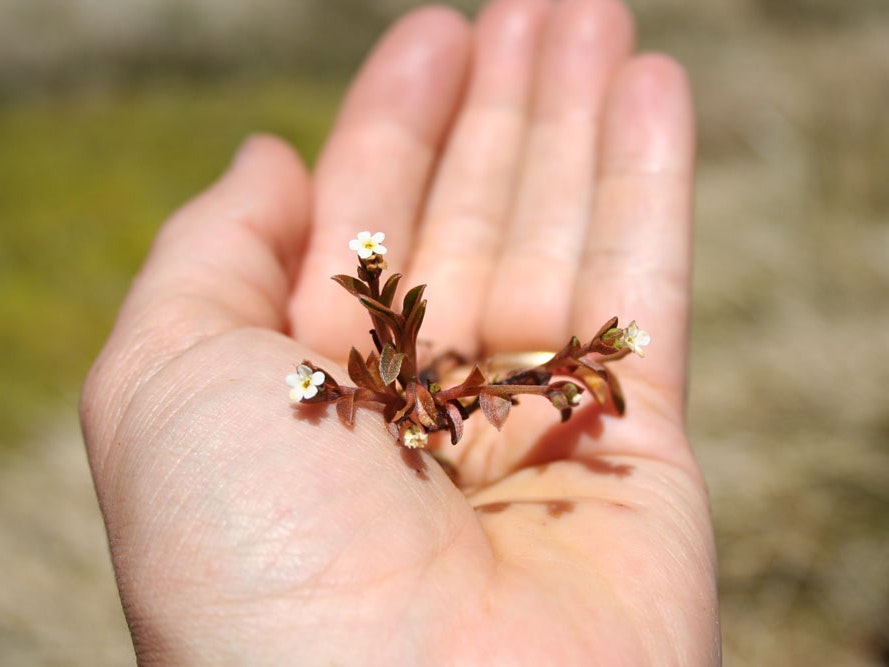
Finding ‘Data Deficient’ forget-me-nots
Botany Researcher Heidi Meudt is on a mission to find and make new research collections of all native New Zealand forget-me-nots.
Free museum entry for New Zealanders and people living in New Zealand
Open every day 10am-6pm
(except Christmas Day)
Free museum entry for New Zealanders and people living in New Zealand
Te Papa researcher: Heidi Meudt
Aotearoa New Zealand's native forget-me-nots are a high conservation priority. This collections-based research includes field work, and analyses of morphology, pollen, DNA, and other characteristics to determine how many species there are, how to tell them apart, and where they are found. This will help determine their conservation status, and the research will also result in a taxonomic revision of all c. 50 Southern Hemisphere forget-me-not species (Myosotis; Boraginaceae).
Our team of botanists on a forget-me-not field trip in Fiordland. Photo by Heidi Meudt. Te Papa
Myosotis glabrescens. Photo by Heidi Meudt. Te Papa
Main collaborators: Jessie Prebble, Manaaki Whenua – Landcare Research; Jennifer Tate, Massey University
Funding: The Ministry of Business, Innovation and Employment’s Science and Innovation Group (via Manaaki Whenua – Landcare Research); the Hutton Fund; and the Department of Conservation.
Representative publications
Heidi M. Meudt, Sofie Pearson, Weixuan Ning, Jessica M. Prebble, and Jennifer A. Tate. 2025. Forget-me-not phylogenomics: improving the resolution and taxonomy of a rapid island and mountain radiation in Aotearoa New Zealand (Myosotis; Boraginaceae). Molecular Phylogenetics and Evolution 204: 108250.
Heidi M. Meudt. 2021. Taxonomic revision of five species groups of ebracteate-erect Myosotis (Boraginaceae) endemic to New Zealand based on morphology, and description of new subspecies. 2021. Australian Systematic Botany. 34, 252-304.
Heidi M. Meudt and Jessica M. Prebble. 2018. Species limits and taxonomic revision of the bracteate-prostrate group of Southern Hemisphere forget-me-nots (Myosotis, Boraginaceae) including description of three new species endemic to New Zealand. Australian Systematic Botany 31(1): 48-105.
Links

Botany Researcher Heidi Meudt is on a mission to find and make new research collections of all native New Zealand forget-me-nots.

Three species of forget-me-nots new to science have just been formally described by Te Papa Botany Researcher Heidi Meudt and colleagues.